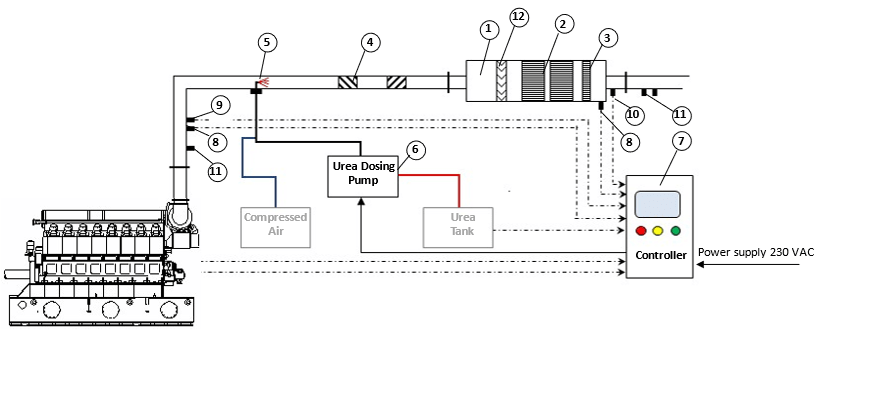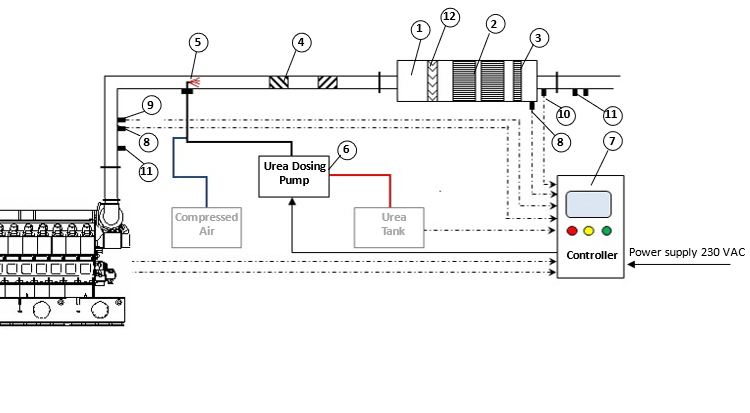All one needs to know regarding Selective Catalytic Reduction
05/17/2021

A compendium of frequently asked questions about Selective Catalytic Reduction systems for marine diesel engines.
Selective Catalytic Reduction (SCR) is an exhaust aftertreatment process that minimises the harmful nitrogen oxide (NOx) emissions produced by diesel engines.
An SCR system uses aqueous ammonia to convert toxic nitrogen oxides into harmless nitrogen gas and water vapour. The process can be summarised as follows:
1: A urea and water solution is injected into the exhaust stream
2: As the water evaporates, the urea is converted into ammonia
3: The ammonia bonds with the nitrogen dioxides in the exhaust gases
4: A catalytic converter reduces the toxic components in the exhaust gases to inert nitrogen gas and harmless water vapour
5: The nitrogen and water vapour are safely released into the atmosphere
This process is described in more detail in our article on SCR system for ships. (link naar SCR system for ships)
An SCR system uses aqueous ammonia to convert harmful components (NOx) into harmless gasses in the exhaust. In most cases we use AUS40 or AdBlue. AdBlue is the brand name for a urea solution that contains 32.5% urea in demineralised water. The technical name is AUS32. AUS40 is a urea solution with 40% urea that has similar properties.
The exhaust gases produced by the combustion process in a diesel engine contain nitrogen oxides. A SCR system is essential to ensure compliance with IMO Tier III emission standards.
A Selective Catalytic Reduction system reduces nitrogen oxide (NOx) molecules to molecular nitrogen and water vapour. A nitrogen-based reducing agent, such as ammonia, is used to trigger a chemical reaction in a catalytic converter that turns pollutants into harmless gasses.
Exhaust Gas Recirculation (EGR) feeds exhaust gases back into the combustion chamber for recombustion, which only partially reduces harmful nitrogen oxide (NOx) emissions. Selective Catalytic Reduction (SCR) is a post-combustion NOx reduction process that does not affect engine performance.
Emigreen®’s innovative Selective Catalytic Reduction system is compatible with basically all types of modern marine engines. It can be installed on new ships and retrofitted on existing ships.

More information: https://www.emigreen.eu/all-one-needs-to-know-regarding-selective-catalytic-reduction/


